Cargando...
Recursos educativos
-
Nivel educativo
-
Competencias
-
Tipología
-
Idioma
-
Tipo de medio
-
Tipo de actividad
-
Destinatarios
-
Tipo de audiencia
-
Creador
Lo más buscado
- Ejercicios escolares para niños de 5 años
- Experimentos de botánica para ESO
- Música digital
- Experimentos de ciencias para cuarto
- Experimentos de ciencias para bachillerato de modalidad
- La República romana
- Ejercicios latín para ESO
- laboratorio ciencias
- Arte español para segundo
- Imprimir material tercero
- Divisiones para practicar
- Actividades musicales en tercero
- Arte español para bachillerato de modalidad
- Imprimir material primero
- Arte gótico para primero
-
Avaluació inicial T10 03 - Els animals
EduBook Organización
- 1950 visitas
Indica per a cada grup si posseeixen aquestes característiques o no: Peixos: Tenen pèl. Tenen plomes. Respiren per brànquies. Tenen esquelet intern. Es reprodueixen per ous. Regulen la seva…
-
Veritable/fals. El fruit i la dispersió de les llavors
EduBook Organización
- 1942 visitas
Indica si les següents frases són veritables o falses: Els fruits poden contenir moltes llavors o una de sola. Els fruits carnosos serveixen d'aliment als animals. Hi ha fruits que estan coberts…
-
Final self-evaluation 03 - The Middle Ages
EduBook Organización
- 1944 visitas
Decide if the following statements are true or false: The Christian kingdoms of the Iberian Peninsula began the conquest of Al-Andalus in the year 711. ➝ Feudal society was divided into classes. ➝…
-

The symmetry of animals
EduBook Organización
- 1954 visitas
There are two different types of symmetry in animals: radial and bilateral symmetry. Radial symmetry. The animal's body has equal parts that radiate from a central axis. It is similar to the spokes…
-
True/false. Sponges
EduBook Organización
- 1955 visitas
Decide if the following statements are true or false: Sponges are the simplest type of animal that exists. Sponges can live in the water and on land. Sponges are usually regular in shape. They eat…
-

Final self-evaluation 10 - Animals
EduBook Organización
- 1955 visitas
Decide if each characteristic relates to mammals or not: They feed their young with milk. ➝ Their eggs have a hard shell. ➝ They have six limbs. ➝ Their skin is covered in hair or fur. ➝ They…
-

Final evaluation 01 - Human reproduction
EduBook Organización
- 1942 visitas
Describe the process of fertilisation and the development of the zygote, from the beginning until the formation of the fetus.
-
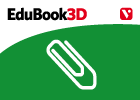
Find out more
EduBook Organización
- 1951 visitas
A hydra is a type of cnidarian. It is only a few millimetres long and lives in fresh water. Hydras reproduce asexually by budding. The hydra in this photo has a bud growing out of its left side. This…
-
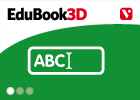
Complete a summary. Matter and materials
EduBook Organización
- 1950 visitas
Write these words in the correct spaces: oxidation chemical natural condensation solidification liquid pure resilience mass gas elasticity density combustion evaporation solid Matter has three different…
-

Convert. Units of measurement
EduBook Organización
- 1952 visitas
Change mass from grams to kilograms, and volume from millilitres to litres: 125 g ➝ kg 1230 g ➝ kg 25 g ➝ kg 300 mL ➝ L 75 mL ➝ L 850 mL ➝ L 2300 g ➝ kg 600 mL ➝ L 10 g ➝ kg
Te estamos redirigiendo a la ficha del libro...













